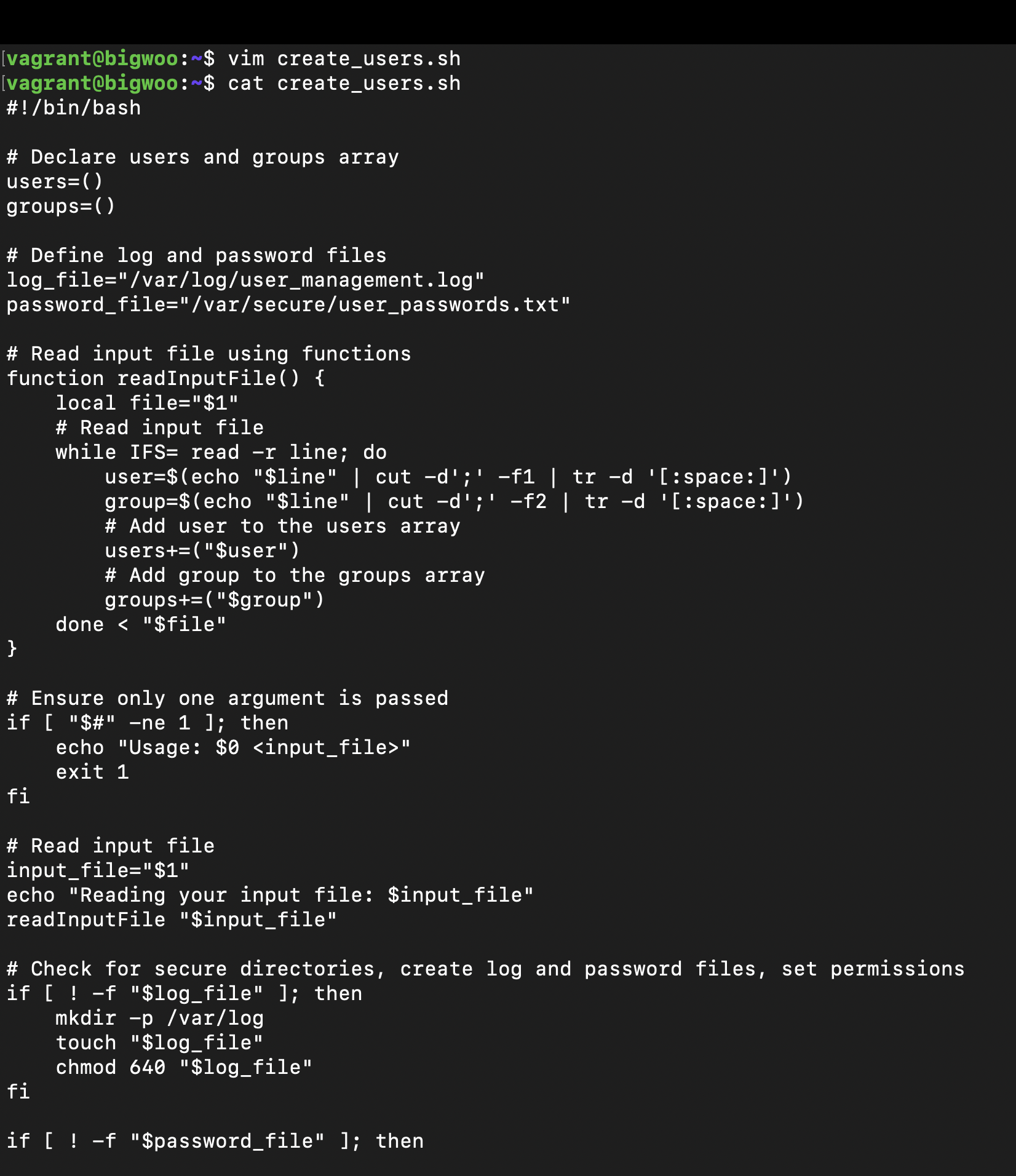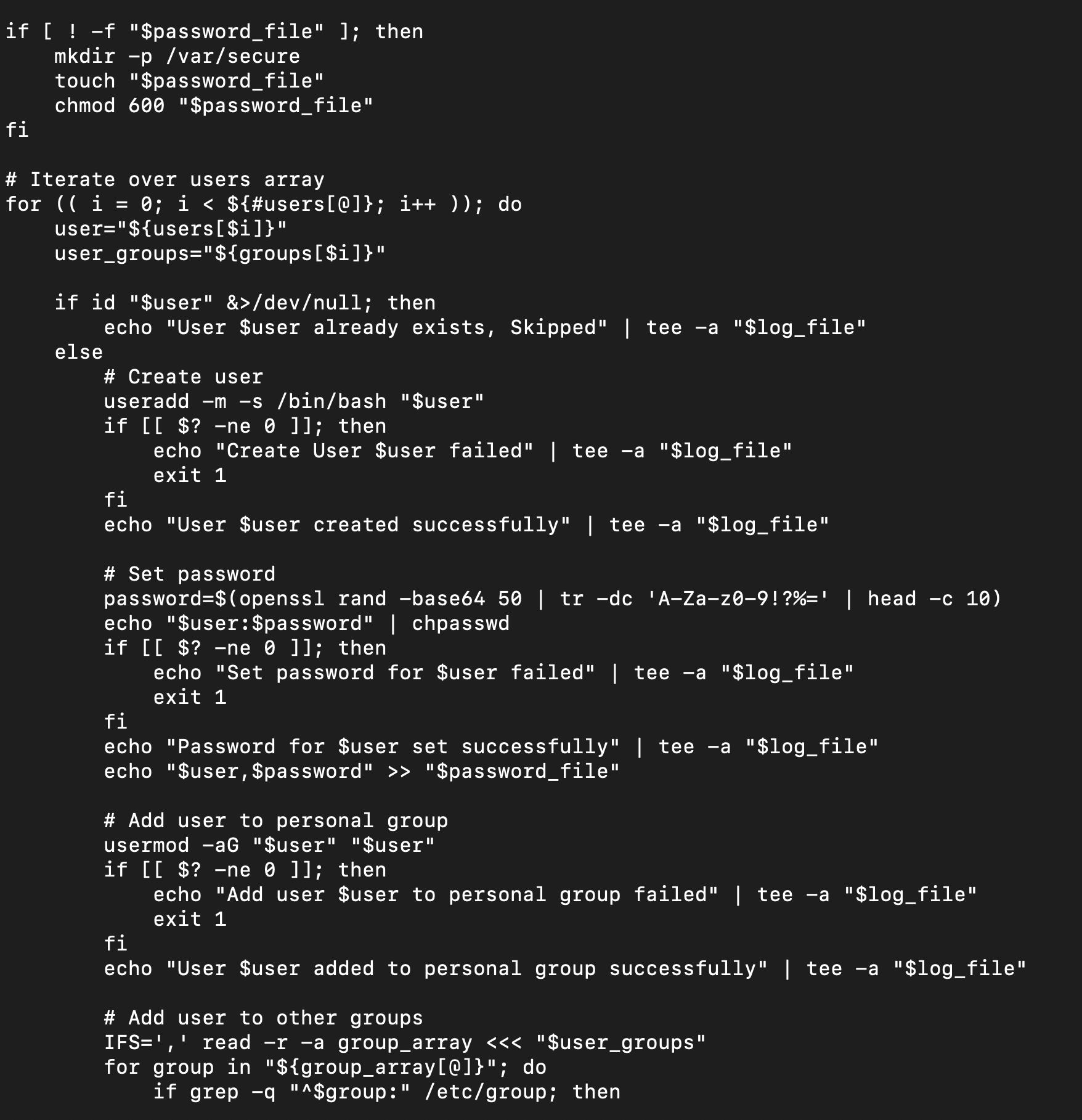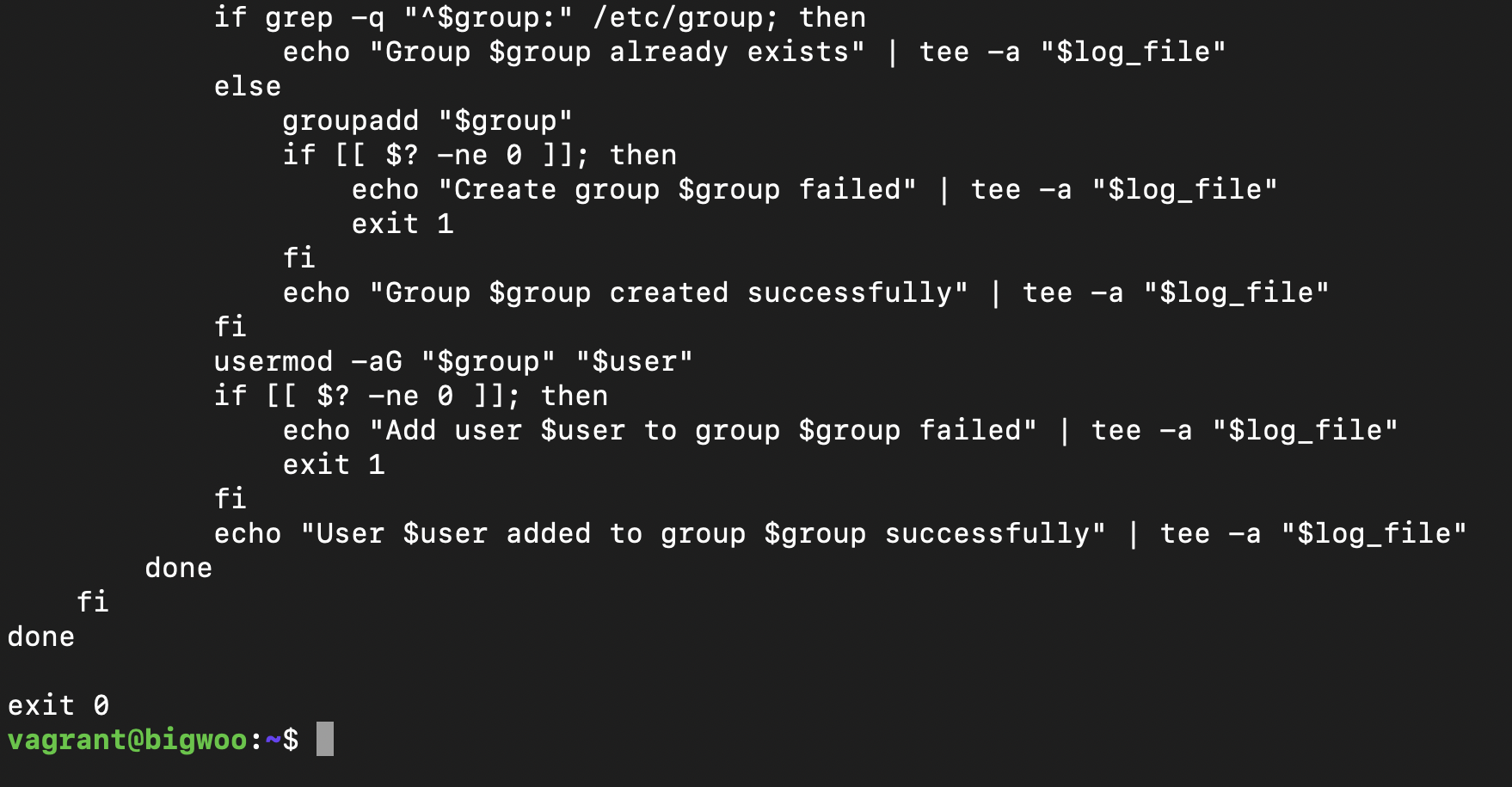Automating User and Group Creation and Management in Linux using Bash Script
 Big Woo
Big WooIntroduction
System administration often involves repetitive tasks like creating multiple user accounts and groups. For Linux administrators, automating these processes can save time and reduce errors. This article explores how to create a bash script that automates user and group creation in Linux systems to enhance security and productivity.
Why Automate?
Efficiency: Quickly set up accounts for new users
Consistency: Ensure uniform settings across all new accounts
Error reduction: Minimize human errors in repetitive tasks
Scalability: Easily manage large numbers of accounts
Prerequisites
Basic knowledge of Linux command line
Administrative (sudo) privileges on the system
A text editor (e.g.,
vim, nano)
Task
Create a bash script, create_users.sh to automate the creation of users and groups. The script reads a text file containing employee usernames and groups, sets up home directories with appropriate permissions, generates random passwords for the users, securely stores the generated passwords, and logs all actions performed. Ensure proper error handling and provide clear documentation and comments within the script.
Solution
System administrators often need to set up multiple user accounts for new employees, each with specific group memberships, home directories, and secure passwords. Doing this manually can be time-consuming and error-prone, hence the need for automation. This ensures consistency, saves time, and reduces the risk of human error. The script, create_users.sh, automates the entire user creation and management process. This script reads user information from users.txt input file, creates user accounts with appropriate settings, generates secure passwords, and logs all actions for auditing.
Implementation
Input Processing:
The script create_users.sh uses a readInputFile() function to read a text input file, users.txt, extracting employee usernames and their associated group information into separate arrays for efficient processing.
Security Checks:
Before processing, the script ensures that secure home directories exist and have proper permissions set to restrict access to logs and password files.
User Creation and Secure Password Management:
For each user in the array, the script checks if the user already exists to avoid conflicts. Random, secure passwords are generated for each user and securely stored in a (/var/secure/user_passwords.txt) file with restricted permissions.
Group Management:
The script checks for the existence of each group and creates new groups if they don't exist, before adding the user to their personal group and other specified groups automatically.
Logging and Error Handling:
All actions are logged to a (/var/log/user_management.log) file for auditing.
The script checks every error, ensures it fails gracefully if issues occur, logs it, and exits with an error status.



Best Practices
Input validation to ensure the correct usage of the script.
Secure handling of sensitive information.
Comprehensive logging for auditing and troubleshooting.
Adaptable modular design with functions for better readability, modifications and maintenance.
Proper exit codes to indicate success or failure.
Conclusion
This bash script demonstrates an efficient and secure method for automating user and group management in Linux systems. By adhering to best practices in security, error handling, and logging, it provides a reliable solution for system administrators handling user account creation at scale, significantly reducing the time and effort required for user management tasks, allowing them to focus on more complex and strategic aspects of their role.
This task is courtesy of HNG, an internship designed to help you enhance your skills and upskill. It is an 8-week free boot camp where you learn to solve problems, learn new technologies and build your network. This is a FULLY remote opportunity offering coding, design, project management, video marketing, data analysis and product testing. Check it out herehttps://hng.tech/internship.
Subscribe to my newsletter
Read articles from Big Woo directly inside your inbox. Subscribe to the newsletter, and don't miss out.
Written by
